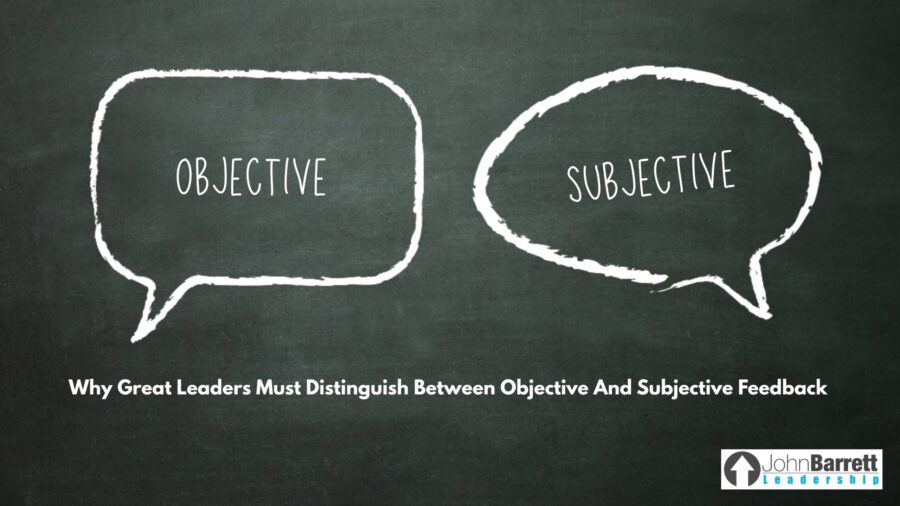Why Great Leaders Must Distinguish Between Objective And Subjective Feedback
In leadership, feedback is your steering wheel—it helps direct the people you’re leading toward growth, improvement, and excellence. But here’s the tension that every passionate, driven leader faces: the fine line between objective and subjective feedback.
Understanding the Difference
- Objective feedback is grounded in standards, best practices, and the measurable outcomes that define success. It’s about what needs to be done and how well it’s being done—think quality, efficiency, alignment with the mission.
- Subjective feedback, however, often masquerades as objectivity. It’s rooted in personal preferences—how you would do it. It’s the color of your personal leadership lens, and if you’re not careful, it can skew how you view others’ performance.
And here’s the danger: when subjective feedback is disguised as objective, it becomes ineffective.
The Leadership Trap
Most leaders—especially high-capacity, visionary ones—have a default preference for their own way of doing things. That’s normal. After all, your leadership journey has been shaped by trial, error, and refinement. But here’s the truth: just because it’s your way doesn’t mean it’s the only way.
When leaders scrutinize others through the lens of their own preferences, they risk cloning themselves instead of cultivating others.
Imagine trying to paint a masterpiece, but only allowing one brushstroke technique. You’ll miss out on the creativity, style, and innovation that others can bring to the table. Leadership is not about replication—it’s about elevation. We’re called to elevate others, not just replicate ourselves.
Why This Matters
Your team doesn’t need to become carbon copies of you. What they need is:
- Clarity on expectations
- Freedom to execute within those boundaries
- Support to develop their strengths, not yours
When objective standards are clear, leaders can give people the space to personalize their approach, innovate, and own their work. That ownership is what fuels engagement and growth.
How to Maintain the Balance
- Define the non-negotiables – These are the standards of excellence and the results that matter. Be crystal clear on what “done right” looks like, objectively.
- Loosen the grip on style – As long as the objective is being met, allow for variance in how it’s accomplished. Give people room to work it out their way.
- Reflect before you correct – Ask yourself, “Is this feedback about excellence or about preference?” If it’s preference, pause. Offer advice, not correction.
The Big Picture
Great leaders walk the tightrope between maintaining standards and making space. They lead with open hands—clear on what matters most, but willing to release control over what doesn’t.
Be objective with your feedback!









